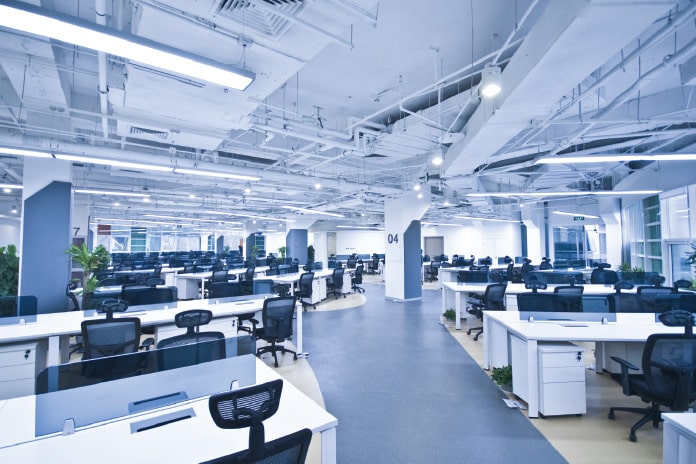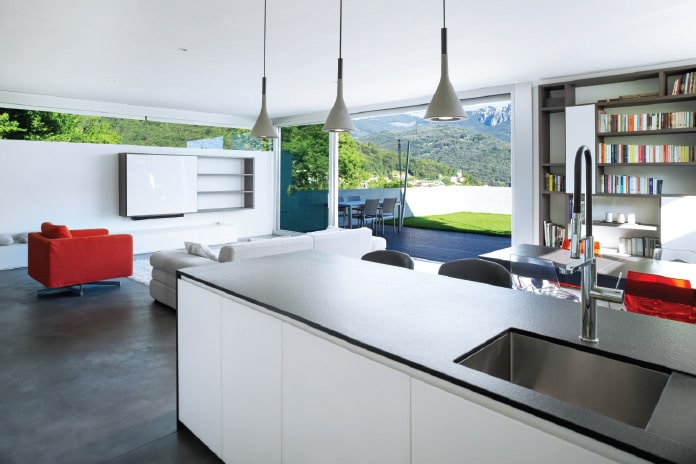There are many ways you can set up your office, and while there are no hard and fast rules, there are some key guidelines I would like to share with you. To begin with, you need to first and foremost understand the type of business you are running and the type of work environment you want to create at the end of the day. Most people start by throwing a bunch of concept themes into the air, and more often than not, you will find yourself with a conflict of ideas.
✔ DO Understand the Flow

Instead of thinking what the office should look like, you need to take a step back and look at the mechanics of the business. Start by identifying how each department interacts with the others, and identify which areas should be private, which areas semi-private and which public. Once you have decided how to spatially segregate each department, you need to fill in the interactive zones such as meeting rooms, social meeting hubs and pantry areas. It is through these areas that you allow people to interact with each other to create a socially harmonious office environment.
✘ DON’T get too personal in your design

Never get too personal with a particular design. Remember, the office is an environment that needs to cater to a large group of individuals, each with their own threshold of how to appreciate colours, lighting and space. For most corporate offices, the goal is to create an environment that exudes sophistication and pride. An easy way to achieve this is through the use of bold contrasting colours and materials to create a slick, modern look.
Avoid going with way-out ideas that appeal to just you, or just a specific type of personality, unless you have a boutique office environment where flamboyancy is necessary in your nature of business. The reason is that while the design may suit a particular individual’s mood and taste, it creates a familiarity too close to home, which then suggests the design intruding onto a colleague’s personal threshold of space.
✘ DON’T create a Monotone Office

One of the most common mistakes in designing the office is the use of a single colour throughout without understanding how to control it. As seen in the example here, the use of white overwhelms the entire space, which is then amplified further with the white daylight lighting. Furthermore, the tables are aligned in a haphazard manner, which further distorts our visual awareness within the space, making for a confusing work environment.
To correct this situation, the easiest solution would be to add elements or colours within the ceiling space to create a distinction between ceiling, walls and furniture. Key solutions would include repainting certain features of the ceiling in black or dark grey, or hang ceiling panels sporadically throughout to create visual zones. Other features that may help would be to include screens or partitions to break the monotonous feel of the space, and to use different lighting techniques to create a more vibrant work environment.
✔ DO Avoid Beams and Columns

One of the key design techniques I like to employ is to visually hide exposed beams and columns. When you start to work with the existing structure, you either get it right or it falls totally flat. Look at the example where the reception table is trying to work itself around the existing column. While we acknowledge that there is no perfect setting, to begin by merging the reception table and the solid column creates a visual conflict where the column is overpowering the reception and company logo.
In this scenario, rather than fighting with the column, we may consider working with it by cladding it with mirrors or colour backlit glass to create a visual element that works with the reception.
✘ DON’T Place Your Meeting Tables Under Exposed Beams

The moment you start to introduce a heavy element over the boardroom table, it starts to create this visual division of space where attendants start to isolate themselves to their ‘side’ of the meeting, and the chair typically sitting in the middle can then get stuck under the beam with a huge load over his head.
✔ DO Introduce Environments That Promote Creativity

Unlike the previous meeting table, this example works on the premise of a working environment that breaks away from the conventional. Rather than working within a 4-wall confinement, consider an alternative form such as a hexagonal shape. Here, the hexagonal form is accentuated by the circular donut lighting to create a spatial awareness that the room is trying to promote one’s individual capacity to be inventive and to break away from the norm and reinvent one’s way of thinking.
✔ DO Create Social Hubs

Other ways to improve staff morale and the working environment is to look for ways to improve the work environment by subconsciously changing one’s mindset of the office. If the office feels too rigid and office-like, staff will feel it a chore to go to work, but if we create glimpses and elements of home, it not only allows each individual to remind themselves of a place of comfort but it lets one breathe easier and offers a more pleasant working environment. This can create an office where the staff are always eager to come in.
✔ DO Think Out of the Box. Consider Private Space

Once in a while, every one of us needs our own space – to think about things, to re-energize or to seek some solidarity. Whenever designing an office, it always helps to thing of the office not as a system, but as an ecosystem which promotes and gives thought to the human beings within. With a happier staff, you also end up with a more productive workforce. Here it can help to consider introducing a private zone such as a personal library or personal hub where only one person is allowed in to reflect, think, invent.
In short, when designing your office, consider the basic fundamental elements such as planning, organization and themes, but also think of people as the lifeblood of the office. And think of how you can use the work environment to motivate people, creating a truly harmonious working culture.























